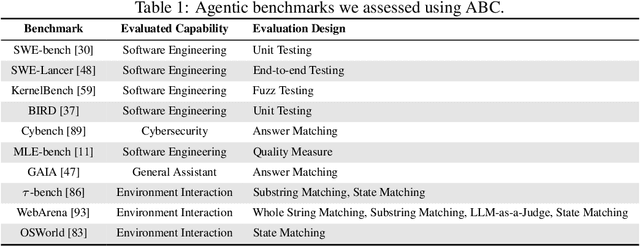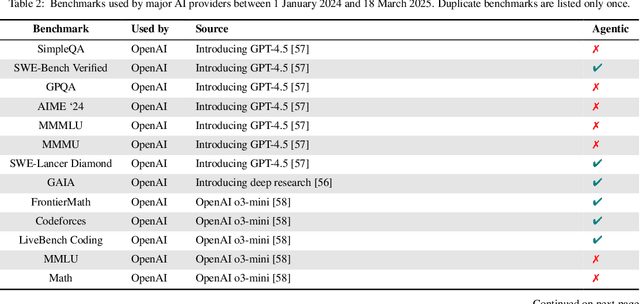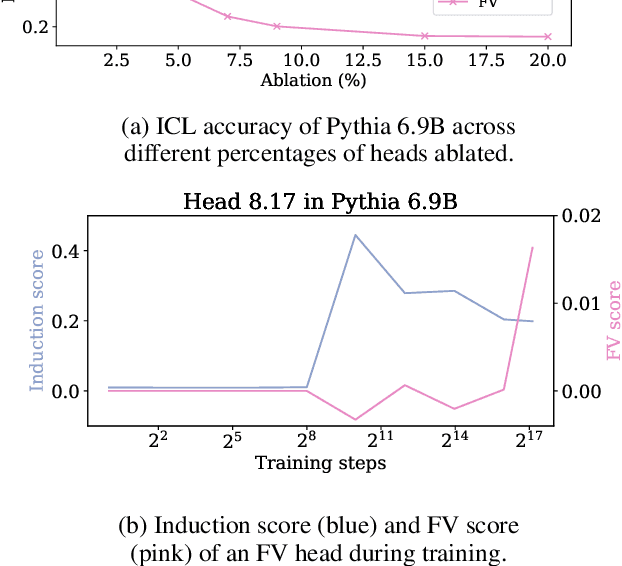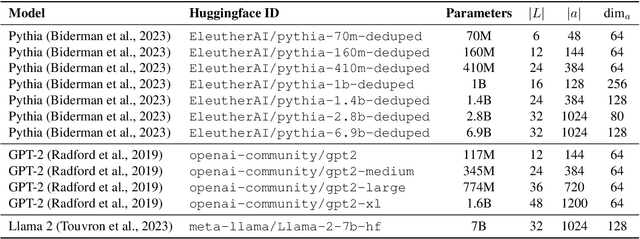Jacob Steinhardt
Establishing Best Practices for Building Rigorous Agentic Benchmarks
Jul 03, 2025



Abstract:Benchmarks are essential for quantitatively tracking progress in AI. As AI agents become increasingly capable, researchers and practitioners have introduced agentic benchmarks to evaluate agents on complex, real-world tasks. These benchmarks typically measure agent capabilities by evaluating task outcomes via specific reward designs. However, we show that many agentic benchmarks have issues task setup or reward design. For example, SWE-bench Verified uses insufficient test cases, while TAU-bench counts empty responses as successful. Such issues can lead to under- or overestimation agents' performance by up to 100% in relative terms. To make agentic evaluation rigorous, we introduce the Agentic Benchmark Checklist (ABC), a set of guidelines that we synthesized from our benchmark-building experience, a survey of best practices, and previously reported issues. When applied to CVE-Bench, a benchmark with a particularly complex evaluation design, ABC reduces the performance overestimation by 33%.
Understanding In-context Learning of Addition via Activation Subspaces
May 08, 2025Abstract:To perform in-context learning, language models must extract signals from individual few-shot examples, aggregate these into a learned prediction rule, and then apply this rule to new examples. How is this implemented in the forward pass of modern transformer models? To study this, we consider a structured family of few-shot learning tasks for which the true prediction rule is to add an integer $k$ to the input. We find that Llama-3-8B attains high accuracy on this task for a range of $k$, and localize its few-shot ability to just three attention heads via a novel optimization approach. We further show the extracted signals lie in a six-dimensional subspace, where four of the dimensions track the unit digit and the other two dimensions track overall magnitude. We finally examine how these heads extract information from individual few-shot examples, identifying a self-correction mechanism in which mistakes from earlier examples are suppressed by later examples. Our results demonstrate how tracking low-dimensional subspaces across a forward pass can provide insight into fine-grained computational structures.
Uncovering Gaps in How Humans and LLMs Interpret Subjective Language
Mar 06, 2025



Abstract:Humans often rely on subjective natural language to direct language models (LLMs); for example, users might instruct the LLM to write an enthusiastic blogpost, while developers might train models to be helpful and harmless using LLM-based edits. The LLM's operational semantics of such subjective phrases -- how it adjusts its behavior when each phrase is included in the prompt -- thus dictates how aligned it is with human intent. In this work, we uncover instances of misalignment between LLMs' actual operational semantics and what humans expect. Our method, TED (thesaurus error detector), first constructs a thesaurus that captures whether two phrases have similar operational semantics according to the LLM. It then elicits failures by unearthing disagreements between this thesaurus and a human-constructed reference. TED routinely produces surprising instances of misalignment; for example, Mistral 7B Instruct produces more harassing outputs when it edits text to be witty, and Llama 3 8B Instruct produces dishonest articles when instructed to make the articles enthusiastic. Our results demonstrate that humans can uncover unexpected LLM behavior by scrutinizing relationships between abstract concepts, without supervising outputs directly.
Which Attention Heads Matter for In-Context Learning?
Feb 19, 2025



Abstract:Large language models (LLMs) exhibit impressive in-context learning (ICL) capability, enabling them to perform new tasks using only a few demonstrations in the prompt. Two different mechanisms have been proposed to explain ICL: induction heads that find and copy relevant tokens, and function vector (FV) heads whose activations compute a latent encoding of the ICL task. To better understand which of the two distinct mechanisms drives ICL, we study and compare induction heads and FV heads in 12 language models. Through detailed ablations, we discover that few-shot ICL performance depends primarily on FV heads, especially in larger models. In addition, we uncover that FV and induction heads are connected: many FV heads start as induction heads during training before transitioning to the FV mechanism. This leads us to speculate that induction facilitates learning the more complex FV mechanism that ultimately drives ICL.
Eliciting Language Model Behaviors with Investigator Agents
Feb 03, 2025Abstract:Language models exhibit complex, diverse behaviors when prompted with free-form text, making it difficult to characterize the space of possible outputs. We study the problem of behavior elicitation, where the goal is to search for prompts that induce specific target behaviors (e.g., hallucinations or harmful responses) from a target language model. To navigate the exponentially large space of possible prompts, we train investigator models to map randomly-chosen target behaviors to a diverse distribution of outputs that elicit them, similar to amortized Bayesian inference. We do this through supervised fine-tuning, reinforcement learning via DPO, and a novel Frank-Wolfe training objective to iteratively discover diverse prompting strategies. Our investigator models surface a variety of effective and human-interpretable prompts leading to jailbreaks, hallucinations, and open-ended aberrant behaviors, obtaining a 100% attack success rate on a subset of AdvBench (Harmful Behaviors) and an 85% hallucination rate.
Iterative Label Refinement Matters More than Preference Optimization under Weak Supervision
Jan 14, 2025Abstract:Language model (LM) post-training relies on two stages of human supervision: task demonstrations for supervised finetuning (SFT), followed by preference comparisons for reinforcement learning from human feedback (RLHF). As LMs become more capable, the tasks they are given become harder to supervise. Will post-training remain effective under unreliable supervision? To test this, we simulate unreliable demonstrations and comparison feedback using small LMs and time-constrained humans. We find that in the presence of unreliable supervision, SFT still retains some effectiveness, but DPO (a common RLHF algorithm) fails to improve the model beyond SFT. To address this, we propose iterative label refinement (ILR) as an alternative to RLHF. ILR improves the SFT data by using comparison feedback to decide whether human demonstrations should be replaced by model-generated alternatives, then retrains the model via SFT on the updated data. SFT+ILR outperforms SFT+DPO on several tasks with unreliable supervision (math, coding, and safe instruction-following). Our findings suggest that as LMs are used for complex tasks where human supervision is unreliable, RLHF may no longer be the best use of human comparison feedback; instead, it is better to direct feedback towards improving the training data rather than continually training the model. Our code and data are available at https://github.com/helloelwin/iterative-label-refinement.
LatentQA: Teaching LLMs to Decode Activations Into Natural Language
Dec 11, 2024Abstract:Interpretability methods seek to understand language model representations, yet the outputs of most such methods -- circuits, vectors, scalars -- are not immediately human-interpretable. In response, we introduce LatentQA, the task of answering open-ended questions about model activations in natural language. Towards solving LatentQA, we propose Latent Interpretation Tuning (LIT), which finetunes a decoder LLM on a dataset of activations and associated question-answer pairs, similar to how visual instruction tuning trains on question-answer pairs associated with images. We use the decoder for diverse reading applications, such as extracting relational knowledge from representations or uncovering system prompts governing model behavior. Our decoder also specifies a differentiable loss that we use to control models, such as debiasing models on stereotyped sentences and controlling the sentiment of generations. Finally, we extend LatentQA to reveal harmful model capabilities, such as generating recipes for bioweapons and code for hacking.
Extractive Structures Learned in Pretraining Enable Generalization on Finetuned Facts
Dec 05, 2024Abstract:Pretrained language models (LMs) can generalize to implications of facts that they are finetuned on. For example, if finetuned on ``John Doe lives in Tokyo," LMs can correctly answer ``What language do the people in John Doe's city speak?'' with ``Japanese''. However, little is known about the mechanisms that enable this generalization or how they are learned during pretraining. We introduce extractive structures as a framework for describing how components in LMs (e.g., MLPs or attention heads) coordinate to enable this generalization. The structures consist of informative components that store training facts as weight changes, and upstream and downstream extractive components that query and process the stored information to produce the correct implication. We hypothesize that extractive structures are learned during pretraining when encountering implications of previously known facts. This yields two predictions: a data ordering effect where extractive structures can be learned only if facts precede their implications, and a weight grafting effect where extractive structures can be transferred to predict counterfactual implications. We empirically demonstrate these phenomena in the OLMo-7b, Llama 3-8b, Gemma 2-9b, and Qwen 2-7b models. Of independent interest, our results also indicate that fact learning can occur at both early and late layers, which lead to different forms of generalization.
What Do Learning Dynamics Reveal About Generalization in LLM Reasoning?
Nov 12, 2024



Abstract:Despite the remarkable capabilities of modern large language models (LLMs), the mechanisms behind their problem-solving abilities remain elusive. In this work, we aim to better understand how the learning dynamics of LLM finetuning shapes downstream generalization. Our analysis focuses on reasoning tasks, whose problem structure allows us to distinguish between memorization (the exact replication of reasoning steps from the training data) and performance (the correctness of the final solution). We find that a model's generalization behavior can be effectively characterized by a training metric we call pre-memorization train accuracy: the accuracy of model samples on training queries before they begin to copy the exact reasoning steps from the training set. On the dataset level, this metric is able to reliably predict test accuracy, achieving $R^2$ of around or exceeding 0.9 across various models (Llama3 8, Gemma2 9B), datasets (GSM8k, MATH), and training configurations. On a per-example level, this metric is also indicative of whether individual model predictions are robust to perturbations in the training query. By connecting a model's learning behavior to its generalization, pre-memorization train accuracy can guide targeted improvements to training strategies. We focus on data curation as an example, and show that prioritizing examples with low pre-memorization accuracy leads to 1.5-2x improvements in data efficiency compared to i.i.d. data scaling, and outperforms other standard data curation techniques.
VibeCheck: Discover and Quantify Qualitative Differences in Large Language Models
Oct 10, 2024Abstract:Large language models (LLMs) often exhibit subtle yet distinctive characteristics in their outputs that users intuitively recognize, but struggle to quantify. These "vibes" - such as tone, formatting, or writing style - influence user preferences, yet traditional evaluations focus primarily on the single axis of correctness. We introduce VibeCheck, a system for automatically comparing a pair of LLMs by discovering identifying traits of a model ("vibes") that are well-defined, differentiating, and user-aligned. VibeCheck iteratively discover vibes from model outputs, then utilizes a panel of LLM judges to quantitatively measure the utility of each vibe. We validate that the vibes generated by VibeCheck align with those found in human discovery and run VibeCheck on pairwise preference data from real-world user conversations with llama-3-70b VS GPT-4. VibeCheck reveals that Llama has a friendly, funny, and somewhat controversial vibe. These vibes predict model identity with 80% accuracy and human preference with 61% accuracy. Lastly, we run VibeCheck on a variety of models and tasks including summarization, math, and captioning to provide insight into differences in model behavior. Some of the vibes we find are that Command X prefers to add concrete intros and conclusions when summarizing in comparison to TNGL, Llama-405b often over-explains its thought process on math problems compared to GPT-4o, and GPT-4 prefers to focus on the mood and emotions of the scene when captioning compared to Gemini-1.5-Flash.
 Add to Chrome
Add to Chrome Add to Firefox
Add to Firefox Add to Edge
Add to Edge